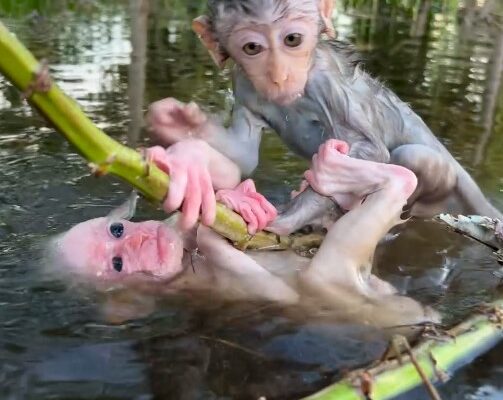Loving animals is more than just an expression of affection; it reflects our connection to nature, a recognition of the intrinsic value of other living beings, and the importance of coexistence on Earth. Here’s why cultivating love for animals matters so profoundly:
Exploring the Fascinating World of Monkeys: Old World And New World Species
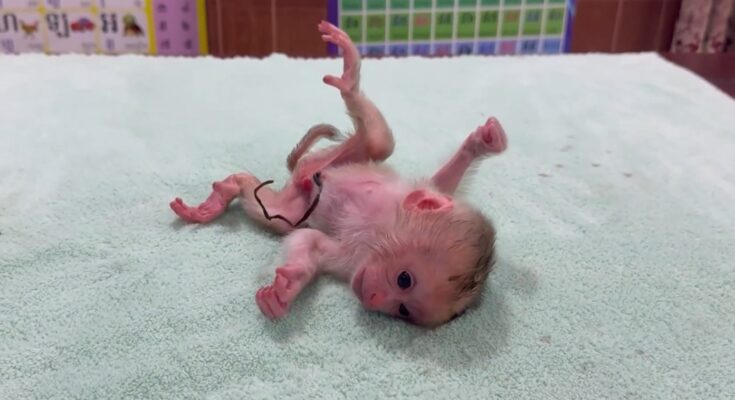
Unlock the Secrets to Baby Monkey Care! 🐒💖 Dive into expert tips on nutrition, bonding, and safe handling to raise a happy, healthy little monkey. Your journey into primate parenting starts here—ensure your baby thrives with our essential guide!
Monkeys are fascinating creatures with diverse species spread across the globe. Scientists categorize them into two main groups based on their geographical location and physical characteristics:
1. Old World Monkeys (Cercopithecoidea)
These monkeys are native to Africa and Asia. They are distinguished by certain features, such as:
- Nostrils: Narrow and downward-facing.
- Tails: If present, they are not prehensile (unable to grasp or hold objects).
- Habitat: Typically found on the ground or in trees, depending on the species.
- Examples:
- Baboons
- Macaques
- Colobus monkeys
- Mandrills
2. New World Monkeys (Platyrrhines)
New World monkeys are found in Central and South America. They differ from Old World monkeys in several ways:
- Nostrils: Wide and outward-facing.
- Tails: Often prehensile, allowing them to grasp branches.
- Habitat: Primarily arboreal, living in trees.
- Examples:
- Capuchins
- Howler monkeys
- Spider monkeys
- Tamarins
How Many Species of Monkeys Are There?
Currently, there are about 260 known species of monkeys, though this number may change as scientists discover new species and refine classification systems.
Fun Facts About Monkeys:
- Smallest Monkey: The pygmy marmoset, native to the Amazon rainforest, weighs only about 100 grams (3.5 ounces).
- Largest Monkey: The mandrill, found in Africa, can weigh up to 35 kilograms (77 pounds).
- Lifespan: Most monkeys live between 10 to 50 years, depending on the species.
Monkeys are incredibly diverse and play a crucial role in ecosystems. Whether swinging through rainforests or roaming savannahs, they captivate our attention with their intelligence, agility, and social behaviors.
Are You Really Want Feeding a Baby Monkey: What You Need to Know
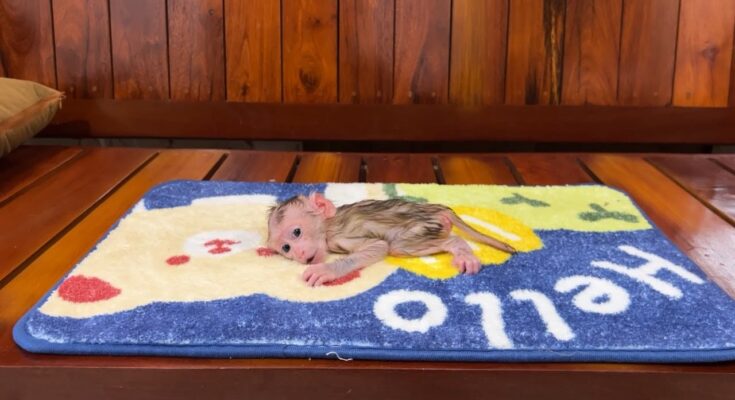
Raising and caring for a baby monkey is a big responsibility. Proper nutrition is vital to ensure its healthy growth and development. In this article, we’ll guide you through feeding tips for baby monkeys, helping you provide the care they need to thrive.
Section 1: Understanding a Baby Monkey’s Nutritional Needs
Baby monkeys require a balanced diet tailored to their species and age. Some general tips include:
- Milk Formulas: For newborns, consult a veterinarian to find a suitable milk replacer. Cow’s milk is often too heavy for them.
- Hydration: Ensure the baby monkey stays hydrated with clean water.
Section 2: Gradually Introducing Solid Foods
As baby monkeys grow, you’ll need to transition them to solid foods.
- Fruits and Vegetables: Start with soft, easy-to-digest fruits like bananas, papayas, and apples (peeled).
- Protein Sources: Introduce small amounts of boiled eggs or tofu as they grow.
- Avoid Junk Food: Never feed processed or sugary foods to baby monkeys.
Section 3: Feeding Schedule and Portion Control
- Frequent Small Meals: Baby monkeys need to eat small portions multiple times a day.
- Observe Their Behavior: Watch for signs of hunger or overfeeding, as every monkey is different.
- Use Proper Feeding Tools: Soft feeding bottles for milk and small bowls for solids are ideal.
Section 4: Common Mistakes to Avoid
- Inconsistent Diet: Stick to a routine to prevent digestive issues.
- Human Food: Avoid spicy, salty, or oily human food at all costs.
- Ignoring Veterinary Advice: Always consult with a professional to ensure you’re meeting your baby monkey’s unique dietary needs.
Conclusion
Feeding a baby monkey is a rewarding but demanding task. By understanding its dietary needs, providing proper nutrition, and following expert advice, you can help it grow healthy and strong. Always remember, the best care begins with love and responsibility.
Should You Feed Baby Monkeys? A Comprehensive Guide
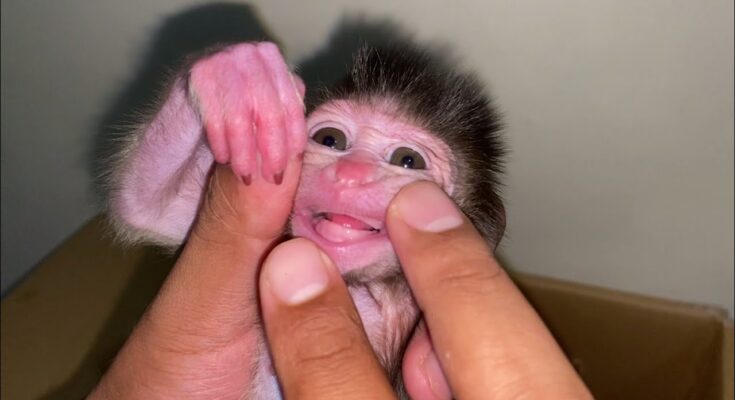
Discover Essential Tips for Raising a Newborn Baby Monkey! 🐒✨ From bonding basics to health care, learn how to give your baby monkey the best start. Dive into the world of primate parenting and uncover expert advice on nutrition, safe handling, and creating a nurturing environment. Whether you’re a first-time caregiver or an animal enthusiast, these tips will help ensure your little one’s growth and happiness. Start your journey with confidence!
Baby monkeys are undeniably adorable, and the thought of feeding one can be tempting, especially when you come across them in the wild or in captivity. However, feeding baby monkeys is a complex topic that requires careful consideration. Here’s everything you need to know before deciding whether to feed a baby monkey.
Understanding Baby Monkeys’ Nutritional Needs
Baby monkeys, like human infants, require specific nutrition to grow and thrive. In the wild, they rely on their mothers for milk and later transition to solid foods like fruits, leaves, and insects. Feeding them inappropriate foods can lead to malnutrition, digestive issues, or even long-term health problems. If you’re not an expert, it’s easy to cause more harm than good.
The Ethical Concerns of Feeding Baby Monkeys
Feeding baby monkeys, especially in the wild, may seem kind, but it can disrupt their natural behavior and survival instincts. Here’s why:
- Dependency on Humans: When monkeys become accustomed to human food, they may lose the ability to forage for themselves.
- Health Risks: Human food often lacks the nutrients they need and can introduce harmful substances.
- Altered Social Dynamics: Feeding one monkey may lead to conflicts within their troop, causing unnecessary stress or aggression.
Is It Legal to Feed Monkeys?
In many countries, feeding monkeys is illegal. Laws aim to protect both humans and wildlife from harm. Feeding monkeys can encourage them to approach humans, leading to potential bites, scratches, and the transmission of diseases. Always check local wildlife regulations before interacting with monkeys.
When Feeding May Be Necessary
There are rare situations where feeding a baby monkey might be necessary, such as in a rescue or rehabilitation setting. In these cases:
- Seek Professional Guidance: Work with a wildlife expert or veterinarian.
- Provide Species-Appropriate Food: Mimic the monkey’s natural diet as closely as possible.
- Plan for Reintegration: If the monkey is to be released into the wild, avoid fostering dependence on humans.
The Role of Education and Awareness
The best way to help baby monkeys is by supporting conservation efforts and educating others about the importance of respecting wildlife. Donations to wildlife organizations, volunteering, and spreading awareness can make a significant difference.
Final Thoughts
Feeding a baby monkey may seem like an act of kindness, but it often does more harm than good. Whether in the wild or captivity, their care is best left to professionals who understand their complex needs. Instead of feeding them, consider supporting conservation efforts to ensure their safety and well-being.
Newborn Baby Monkey Wears an Old Outfit – A Touching and Unexpected Moment!
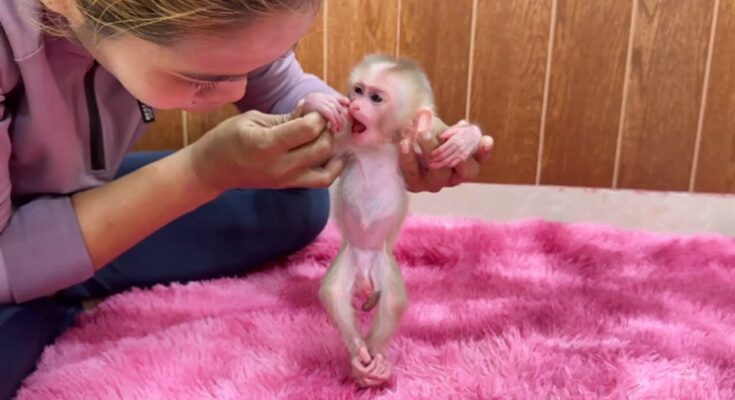
In a heartwarming turn of events, a newborn baby monkey has been spotted wearing an outfit previously owned by its older sibling. The sight instantly melted hearts as the tiny monkey adorably donned the hand-me-down clothing, creating a sense of nostalgia and connection.
The outfit, once worn by the elder monkey, has a rich history of playful adventures and cherished memories. Now, seeing it on the little one brings a renewed sense of wonder and joy. The snug fit and the tiny adjustments made to the garment highlight the care and love poured into preparing it for the new arrival.
Such moments showcase the tender bond between families in the animal kingdom. It’s not just about practicality; it’s about the stories woven into these little details that make them so special. The sight of the newborn carrying on this legacy is a touching reminder of continuity, love, and the joy of new beginnings.
Viewers can’t help but marvel at the sweetness of this moment, making it one for the books. Whether it’s the outfit or the adorable expressions of the baby monkey, this scene is sure to leave a lasting impression on all who witness it!
Heartwarming Rescue: Newborn Baby Monkey Saved by Farmer and Her Son
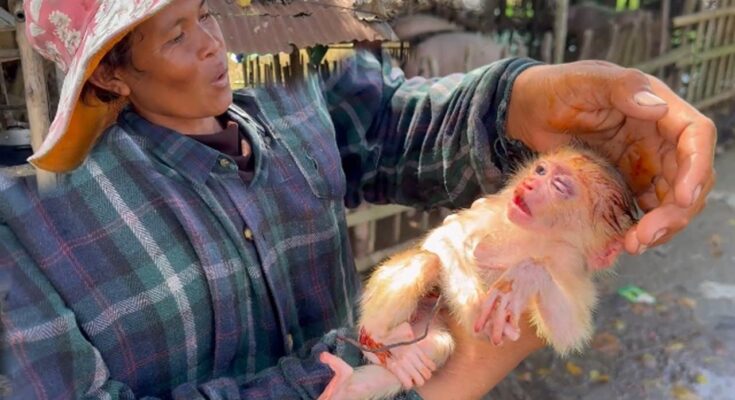
Caring for Your Newborn Baby Monkey Made Easy! 🐒✨ Discover vital care tips that cover everything from feeding to playtime. Equip yourself with knowledge for a successful start in your monkey’s life. Click now to learn how to create a nurturing home!
In a heartwarming turn of events, a compassionate farmer and her son came to the rescue of a helpless newborn baby monkey. The little primate, lost and in desperate need of help, was discovered near their farmland.
The farmer and her son acted swiftly, showing incredible care and kindness. They gently brought the baby monkey to safety, providing warmth, nourishment, and the love it desperately needed.
This story of compassion and humanity reminds us all of the bond between humans and animals. The touching rescue is proof that even the smallest acts of kindness can make a world of difference.
Stay tuned to read more inspiring stories of hope and love like this one!
Heartbreaking Scene: Twin Lookalikes and Newborn Crying, Unable to Connect!
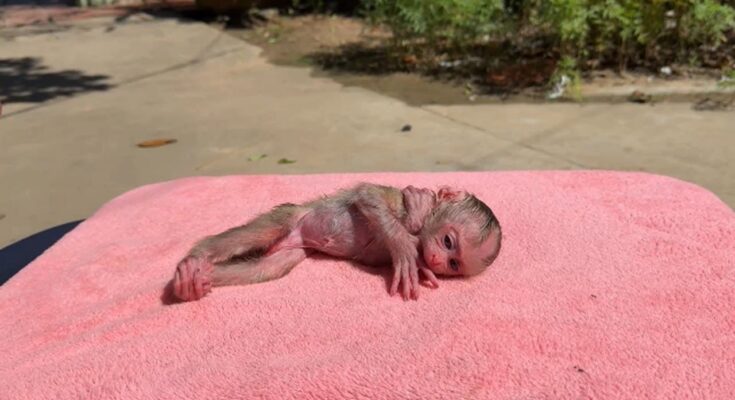
A truly emotional moment unfolded in the jungle as a pair of lookalike twins and a fragile newborn found themselves in distress. The scene was filled with piercing cries and visible discomfort as the twins and the newborn seemed unable to bond, leaving onlookers heartbroken
Heartbreaking Yet Hopeful: The Fragile Journey of a Newborn Monkey
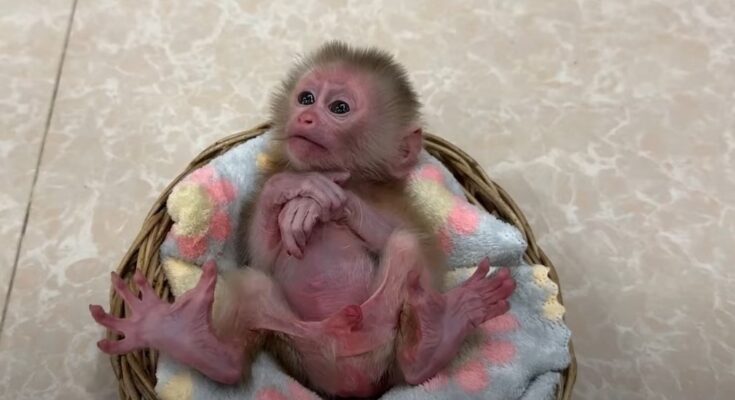
🎉 A Proud Moment for NB Baby Sanga!
NB Baby Sanga has reached an exciting milestone! Watch as they take their first confident steps, one by one, moving forward with determination and adorable charm. This heartwarming achievement reminds us all of the beauty of growth and progress. 💖
📹 Check out the video below to witness this joyful moment!
Every little step counts towards great strides in life. Let’s celebrate every moment!
New Mom Cleans Newborn Baby Monkey’s Umbilical Cord with Betadine
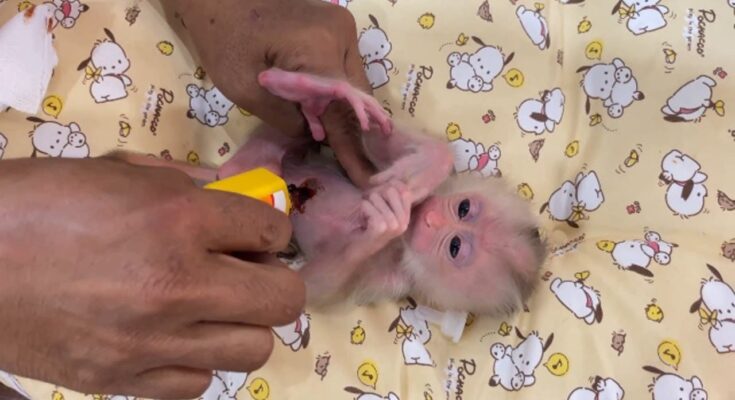
Caring for a newborn baby monkey requires special attention, especially during the initial stages of their life. One essential part of their early care is cleaning the umbilical cord to ensure proper healing and prevent infections.
In this instance, a new mom chose to use Betadine, a commonly trusted antiseptic solution, for cleaning her baby monkey’s umbilical cord. Betadine is often used in both human and animal care due to its effectiveness in reducing the risk of bacterial infections.
Why Clean the Umbilical Cord?
When baby monkeys are born, the umbilical cord is still attached to their abdomen. Over time, this cord dries up and falls off naturally. However, during this process, the area is susceptible to infections. Regular cleaning helps keep the area sterile and speeds up healing.
How Betadine Works
Betadine contains povidone-iodine, which kills bacteria, fungi, and viruses on contact. It’s gentle enough for sensitive areas while being highly effective in preventing infections.
Steps Taken by the Mom
- Gather Supplies: A cotton swab, Betadine solution, and clean hands are essential.
- Clean the Area: Using a cotton swab dipped in Betadine, she gently cleaned around the base of the umbilical cord.
- Let It Dry: The area was left to air dry to allow the antiseptic to work effectively.
Benefits of Using Betadine
- Prevents infections in the sensitive area.
- Supports faster healing of the umbilical cord.
- Easy to apply and widely available.
Important Tips for Umbilical Cord Care
- Always use clean, sterilized supplies.
- Avoid over-saturating the area; a light application is enough.
- Monitor the area for any signs of redness, swelling, or foul odor, which could indicate an infection.
- Consult a veterinarian or primate specialist for additional guidance.
Proper care like this not only helps the baby monkey thrive but also highlights the deep love and dedication of the mom in ensuring the well-being of her little one.
By following a similar approach, you can ensure the health and safety of any newborn animal under your care.
Newborn Baby’s Adorable Reaction to Mom Calling Him Will Melt Your Heart!
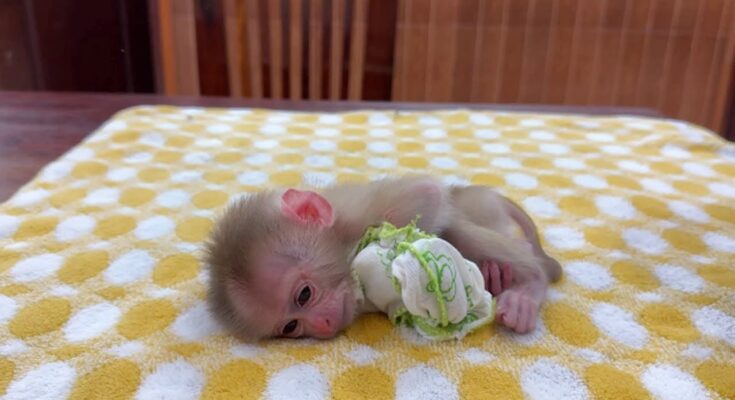
Welcome Your Baby Monkey with Love! 🐒❤️ Discover essential care tips for nurturing your newborn primate. From nutrition and bonding to creating a safe environment, learn how to ensure your little monkey thrives. Explore expert advice and fun facts about their unique needs. Start your adventure in primate parenting now!
Have You Ever Seen a Newborn Baby Monkey Taking a Shower? A Delightful Sight!
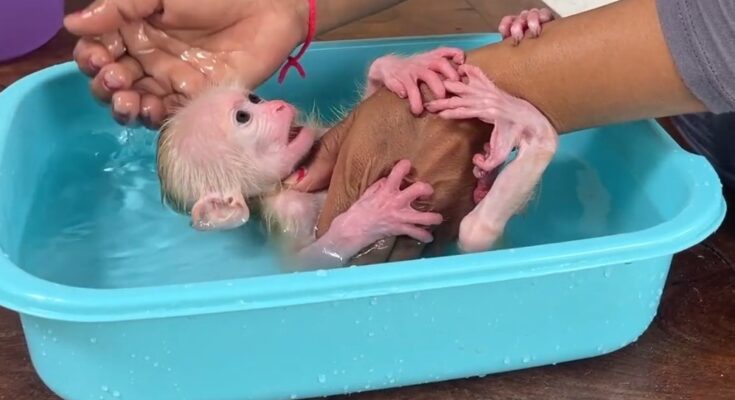
The world of baby animals is full of surprises, and watching a newborn monkey take a shower is one of the most adorable sights you’ll ever witness. These tiny creatures, just starting to explore their surroundings, often interact with water in ways that will melt your heart. Let’s dive into the fascinating experience of baby monkeys and their first showers.
A Rare and Adorable Moment
Newborn monkeys are naturally curious, but they rely heavily on their mothers to guide them in the early stages of life. When it comes to water, the experience is often new and intriguing for these little ones. Unlike adult monkeys, who may be accustomed to grooming rituals, a baby monkey’s first interaction with water is usually clumsy yet heartwarming.
Mothers play a vital role during this time, gently introducing their babies to water. Whether it’s a quick rinse or a playful splash, these moments not only clean the baby but also strengthen the bond between mother and child.
Why Do Baby Monkeys Take Showers?
Monkeys in the wild and captivity alike have a natural inclination for cleanliness. Showers or baths help remove dirt, parasites, and debris, keeping their skin and fur healthy. For newborns, it’s also a way to stay cool in warm climates and maintain comfort.
In many cases, baby monkeys don’t just passively experience showers—they actively enjoy them! Their tiny hands may play with the water, and their curious eyes follow the ripples and splashes. These interactions provide sensory stimulation and contribute to their learning and development.
Monkeys and Water: A Unique Relationship
Not all monkeys are naturally drawn to water, but species like macaques and capuchins are known for their playful behavior around rivers and streams. Seeing a newborn monkey take a shower reminds us of their adaptability and the similarities they share with humans.
Conclusion
Watching a newborn baby monkey take a shower is a magical moment that showcases the wonder of nature. These tiny creatures, full of life and curiosity, remind us of the simple joys that come with discovery. If you ever have the chance to witness this adorable sight, cherish it—it’s a rare and unforgettable experience!
